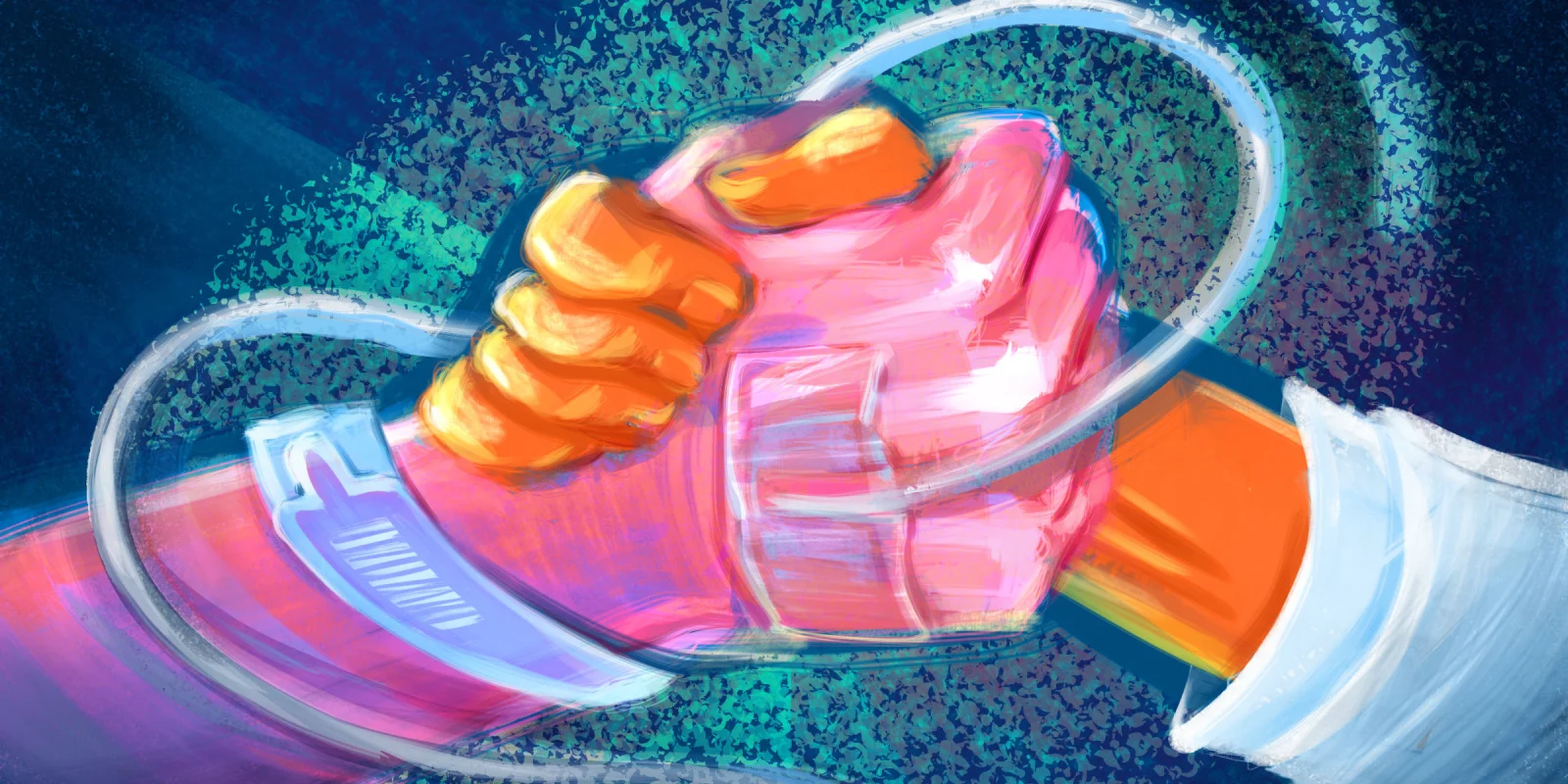I kept imagining a trocar going through my gravid uterus and killing my 16-week fetus. That’s all I could think about the night before my surgery. I’m a reasonable, well-educated ob/gyn physician who knows that the likelihood of what I was imagining actually happening was low — and yet when I was rolling back to the OR, waves of emotion were rolling over me. I felt in control in pre-op because I knew the pre-op team — my surgeon, his assistant — and how to navigate the hospital. But as soon as anesthesia rolled my bed away from pre-op and toward the OR, the same OR I have stood in countless times to operate on patients exactly like me, I began to realize the reality of what was going to happen to me.
They rolled me into the same room where I first learned how to do a hysterectomy, and transferred me onto the same bed where I had seen a patient develop a debilitating stroke intraoperatively and never wake up. The OR staff milled around me, setting things up, attaching wires to my body, putting cold fingers onto my naked arms, legs, chest, and abdomen. I made jokes, trying to make everyone else comfortable, even as I could feel my husband’s kiss goodbye from pre-op still on my lips. I could see the worry in his eyes, making a silent plea that both his wife and baby would make it through. My heart rate increased slightly; my blood pressure was a little higher but still within normal range, so presumably I was doing fine. Anesthesia applied my oxygen mask, began administering the propofol (which burned through my arm and into my chest), and I felt myself start to cry. It was a single tear down my cheek — but it felt like a deep howl. I was terrified, staring up at a ceiling I’d never seen before, from a bed I’d stood over many times, with no surgeon, no friends, and no one I knew or trusted next to me.
I woke up in the PACU, surprised that no time had elapsed. My abdomen throbbed. It was over. Whatever had transpired, I had made it. I groggily leaned over to the PACU nurse and said, “My baby?”
She smiled and said, “We got doppler tones about 10 minutes ago. Your co-resident friend stopped by.”
Still, the moments preceding my surgery stuck with me, like a dream that you know means something, even if you’re not sure what. I kept thinking about how lucky I was to have known my surgeon, known my OR staff, known every step that would be performed during my surgery. I wondered how much more terrifying every part of the process would’ve been if I hadn’t known any of those details. And the moments of isolation and fear before I fell asleep haunted me. I wondered if this was what all my patients felt before they fell asleep. Was everyone laying there, secretly terrified, holding back tears, begging and bartering with a higher power that their surgery would go okay?
Later, I started thinking about what would have made my experience better, and it seemed obvious: I had wanted someone by my side during the induction of anesthesia. More specifically, I wanted a hand to hold. And I realized it didn’t have to be someone I knew, or even someone critically important to the surgery; it just needed to be someone who could help with the loneliness, and distract me from the impending outcomes.
When I eventually went back to work, I started offering, slowly, to hold patients' hands in the OR prior to the administration of anesthetic. Initially, I felt timid; I was a trainee and didn’t want to be in anyone’s way. Everyone knows that the OR becomes like a pit crew stop once the patient is transferred. But no patient ever turned me down when I asked permission to hold their hand, and, as time proceeded, I became bolder. I held every patient’s hand, every time (with consent). Some anesthesiologists scolded me for “potentially getting in the way.” I went out of my way to respect their authority, but I also refused to let up. I’d ask the patient where they’d be going on their anesthesia holiday, what their fears were, how many kids they had, what they were most looking forward to after the surgery was over. I distinctly remember an anesthesiologist who pushed me aside and said, “You don’t belong up here. Your job starts once she’s asleep.”
After enough of this kind of feedback, I began to wonder if what I was doing was worthwhile, or if I really was just a nuisance to the team. And then it happened. I was in clinic and a patient started gushing to my attending about her wonderful experience in surgery, and specifically focused on a surgical fellow who had held her hand.
“She’s pregnant,” she said. My attending looked over at me, and said, “You realize that fellow is sitting a foot away from you; it's Dr. Muldoon.” Understanding washed over the patient’s face as she recognized me, my scrub and mask now replaced with makeup and a dress.
“It is you,” she said. She started to tear up, walked over to me, grabbed my hand, and said, “I remember you told me it’s going to be a girl, right? I remember you told me her name.”
I nodded and said, “It’s still a secret.”
She leaned in and whispered my baby girl’s name in my ear.
“Yup,” I said. “That’s her name.”
She looked deep into my eyes for several seconds before saying, “You don’t know how much it meant to me to have you there, just for me.”
After that, I doubled down. And since then? I can’t count how many times my team has received feedback that the patient remembers me holding their hand and how much it meant to them. I receive text messages throughout the day from attendings mentioning that a patient remarked about how much they appreciated having their hand held. Of all the things they could choose to discuss at a post-op visit, they choose to discuss my hand.
The truth is, there’s evidence to support hand-holding as a form of analgesia. Frankly, it also just makes intuitive sense. Think back to any traumatic experience you’ve had — how much less traumatic might that experience have been if someone – anyone – had been there to hold your hand? As long as the patient gives consent and the anesthesiologist doesn’t need access to the hand and/or the patient’s undivided attention, the arguments against hand-holding are unconvincing. I’ve found that patients do not say no to this small gesture, and many appreciate having someone who is there as their designated person. Medical students, nurses, ancillary staff — no hand is too small or too inconsequential to provide support. As The Beatles so aptly sang, “I want to hold your hand,” I challenge you to hold your patients’ hand and make the OR, the hospital, and the world a slightly less lonely place. You never know when you may be on the OR table yourself, holding back tears, wishing for your own human connection.
Has your experience as a patient ever changed your approach as a clinician? Share your story in the comments below.
Dr. Muldoon is a minimally invasive gynecologic surgery fellow, a mother to the world’s tallest one year old and a 7-year-old Labrador, a wife to a kind Canadian, and an avid reader and fridge magnet collector. Dr. Muldoon is a 2020–2021 Doximity Op-Med Fellow.
Illustration by April Brust







